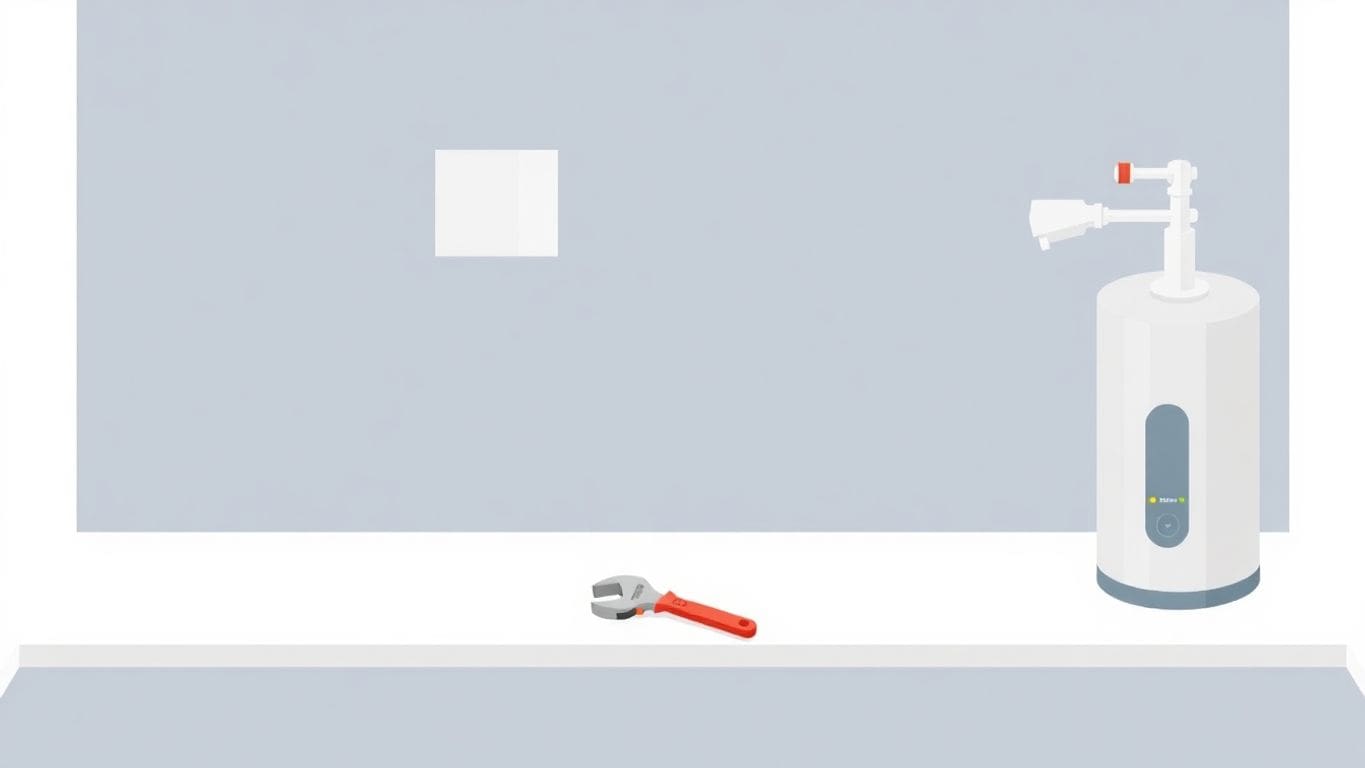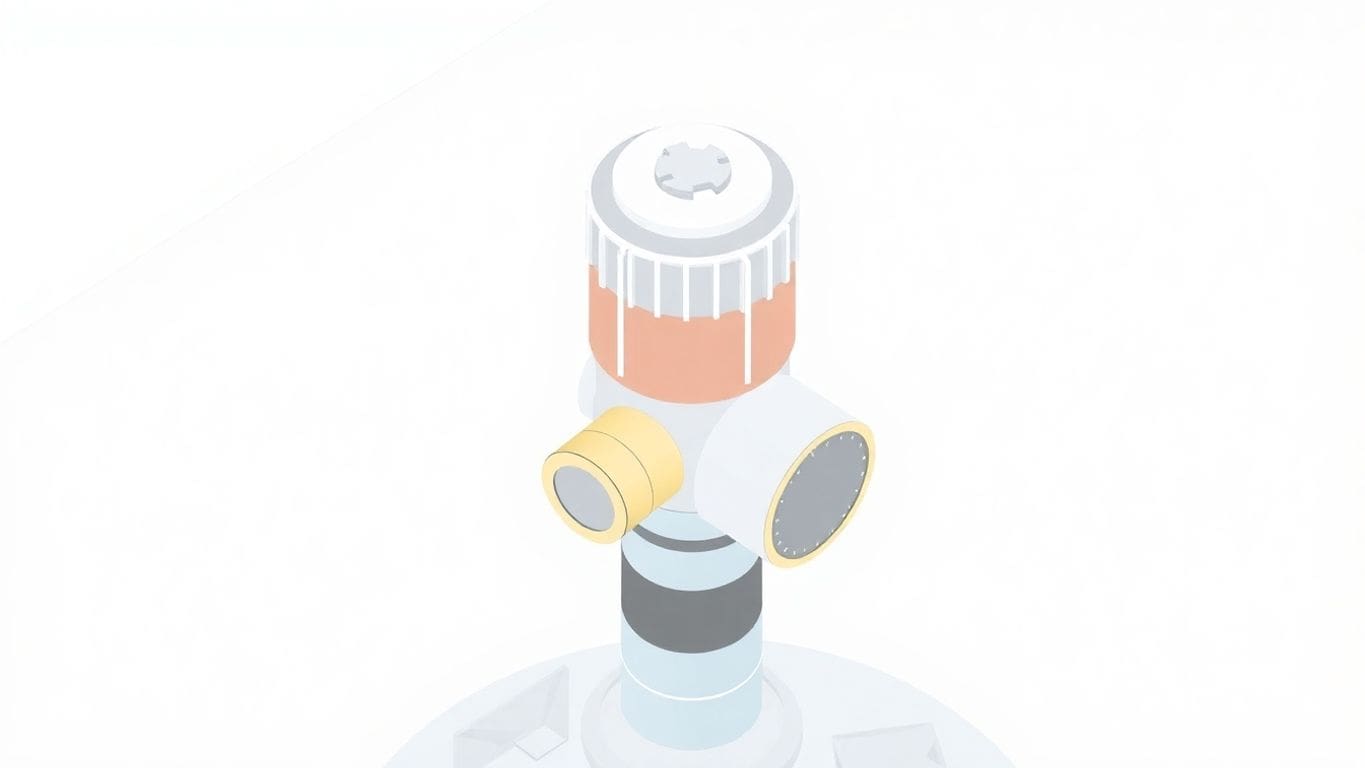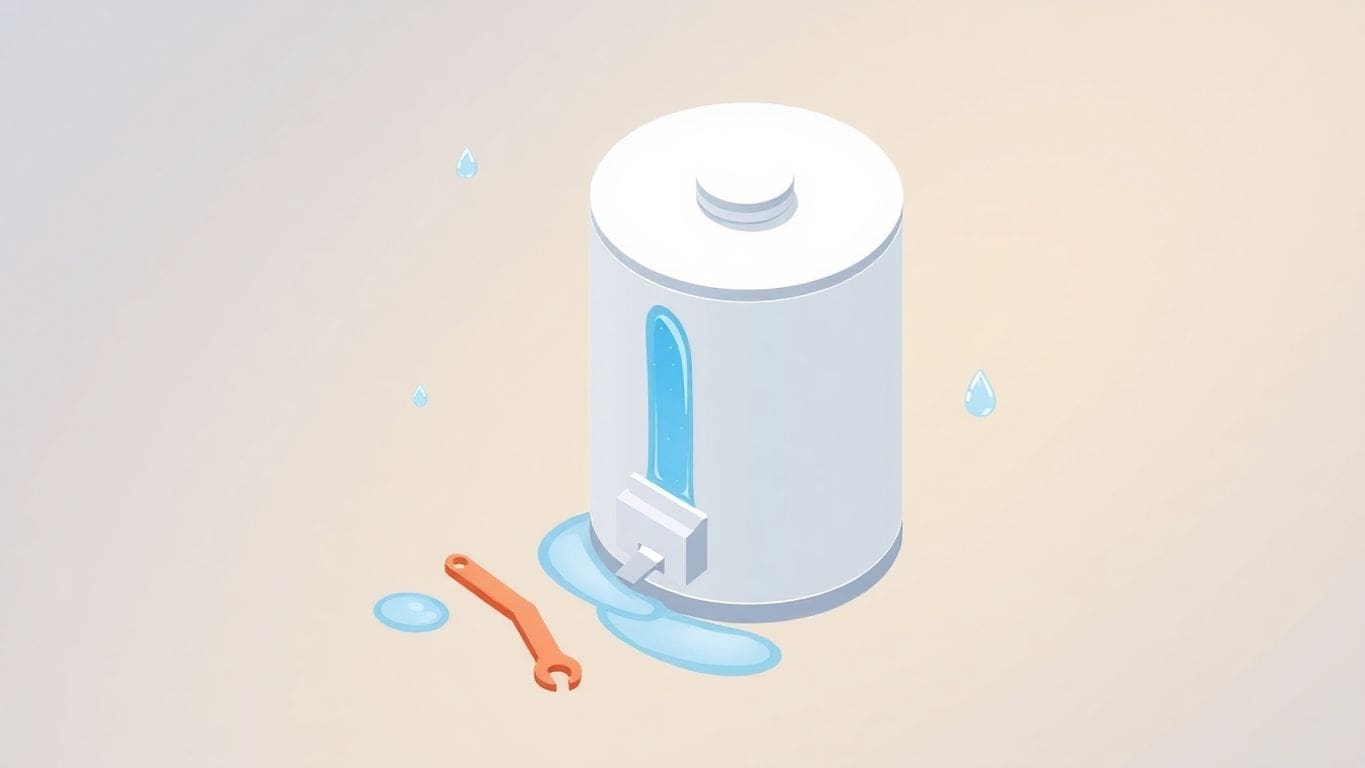
Keeping your tankless water heater in good shape is key to getting hot water when you need it. These units are efficient and save space, but they still need some care. Regular maintenance can help you avoid costly repairs and ensure that your heater runs smoothly. In this article, we’ll go over essential tips on how to maintain a tankless water heater so you can enjoy reliable hot water for years to come.
Tankless water heaters are pretty cool. Instead of heating water in a big tank all the time, they heat water only when you need it. When you turn on the hot water tap, cold water travels through a heat exchanger inside the unit. This heat exchanger quickly warms the water, giving you hot water almost instantly. This on-demand system means you don’t waste energy heating water you aren’t using.
Tankless water heaters have some great perks.
Plus, tankless systems tend to last longer than tank-based heaters, often lasting 20 years or more with proper care. That’s a lot of hot showers!
Some people think tankless water heaters can’t handle big demands. Like, if you’re running the shower, dishwasher, and washing machine all at once. While it’s true that a tankless heater can only heat a certain amount of water at a time, you can get models that are powerful enough for even big households. Another thing is that people think they don’t need any upkeep. But, like anything else, tankless heaters work best if you take care of them. Regular maintenance will keep it running smoothly for years.
Taking care of your tankless water heater is super important. It’s like taking care of your car. If you don’t do it, things can go wrong. Let’s talk about why keeping up with maintenance is a good idea.
Think of your tankless water heater like a hardworking machine. Over time, it can get clogged up with stuff like minerals from the water. This can make it work harder and not as well. Regular maintenance keeps it running smoothly. It also helps you avoid big problems later on.
If you don’t take care of your tankless water heater, bad things can happen. It might not heat water as well, or it could break down completely. You might end up with cold showers or expensive repairs. Plus, it could shorten the life of your water heater. Nobody wants that!
When your tankless water heater is clean and well-maintained, it works better. It uses less energy to heat water, which saves you money on your energy bill. It’s like getting better gas mileage in your car. A well-maintained water heater is an efficient water heater.
Regular maintenance can save you money and trouble in the long run. It keeps your water heater working its best and helps it last longer.
Over time, minerals like calcium and magnesium can build up inside your tankless water heater. This is especially true if you have hard water. This buildup, called scale, can make your water heater work harder and less efficiently. Descaling removes this buildup, helping your water heater last longer and work better. Think of it like cleaning out the pipes so water can flow freely again.
Descaling your tankless water heater isn’t too hard, but you need to follow the steps carefully. Here’s a simple way to do it:
Descaling can seem like a chore, but it’s a key part of keeping your tankless water heater running smoothly. By following these steps, you can keep your system in good shape and avoid costly repairs down the road.
How often you need to descale depends on how hard your water is. If you have very hard water, you might need to do it every year. If your water is softer, you can probably get away with descaling every two years. A good rule of thumb is to check your water heater’s manual for the manufacturer’s recommendations. Also, if you notice your hot water isn’t as hot as it used to be, or if you hear strange noises from the unit, it might be time to descale.
Tankless water heaters often have a water filter. This filter stops dirt and small bits from getting into the heater. A dirty filter can cause problems. It can make the water flow slow. It can even damage the heater. So, cleaning the filter is important.
The water filter is like a gatekeeper. It protects your tankless water heater from sediment and debris. This keeps the heater working well. The filter helps to maintain good water flow and prevents clogs. Over time, the filter gets full of stuff. This is why you need to clean it. A clean filter means better water pressure and a longer life for your water heater. If you have hard water, you might need to clean it more often.
Cleaning the water filter is easy. Here’s how:
Cleaning the filter regularly helps your tankless water heater last longer. It also keeps your water clean. It’s a simple task that can save you money in the long run.
Sometimes, cleaning isn’t enough. Over time, the filter can get damaged. If you see any tears or cracks, it’s time to replace it. Also, if you clean the filter and it still looks dirty, replace it. A new filter will make sure your water heater runs efficiently. How often you replace the filter depends on your water quality. If you have hard water, you might need to replace it more often. Check the filter every few months to see if it needs cleaning or replacing.
Your tankless water heater needs to vent properly to work safely. The venting system lets out gases that are made when the heater is running. If the vent is blocked or broken, these gases can build up and cause problems. Let’s look at how to keep your venting system in good shape.
Proper venting is super important for your safety. It makes sure that dangerous gases, like carbon monoxide, go outside instead of staying in your house. Carbon monoxide is a gas you can’t see or smell, and it can be very harmful. If your vent isn’t working right, it can cause health problems or even be deadly. Also, good venting helps your water heater work better and last longer. Think of it like this: a car needs a working exhaust system, and your tankless water heater needs a working vent.
It’s important to know the signs of venting problems so you can fix them quickly. Here are some things to look for:
If you notice any of these signs, don’t wait. Get your venting system checked by a professional right away. It’s better to be safe than sorry.
Keeping your venting system in good shape isn’t too hard. Here are some things you can do:
It’s important to set your water heater to the right temperature. If it’s too high, you could get burned. If it’s too low, you might not have enough hot water. A good temperature to aim for is around 120°F (49°C). This is usually hot enough for most uses and helps save energy. Think of it like finding the sweet spot for your shower!
Changing your water temperature can save you money. Lowering the temperature a few degrees can reduce your energy bill. You can adjust the temperature on your water heater unit. Check your owner’s manual for instructions. It’s a small change that can make a big difference over time. Here are some things to consider:
Safety is key when dealing with hot water. Very hot water can cause burns, especially for kids and older adults. Always test the water temperature before getting in the shower or bath. Install anti-scald devices on your faucets and showerheads to prevent accidents. These devices limit how hot the water can get. It’s a simple step that can protect your family. If you are thinking about replacing your old unit, consider a tankless water heater replacement.
Keeping your water temperature at a safe and efficient level is a simple way to save money and protect your family. Take a few minutes to check your settings and make any needed adjustments. It’s a small task that can have a big impact.
It’s important to check your tankless water heater for leaks and corrosion. Doing this can help you catch small problems before they become big, expensive ones. Plus, it keeps your system running well and lasting longer.
Leaks can happen in a few different spots. Check these areas:
Corrosion is like rust. It can damage your water heater over time. Here’s how to help prevent it:
If you find a leak, don’t panic. Here’s what to do:
Ignoring leaks can lead to bigger problems like mold, mildew, and even electrical hazards. Addressing them quickly can save you money and stress in the long run.
Regularly checking for leaks and corrosion is a simple way to keep your tankless water heater in good shape.
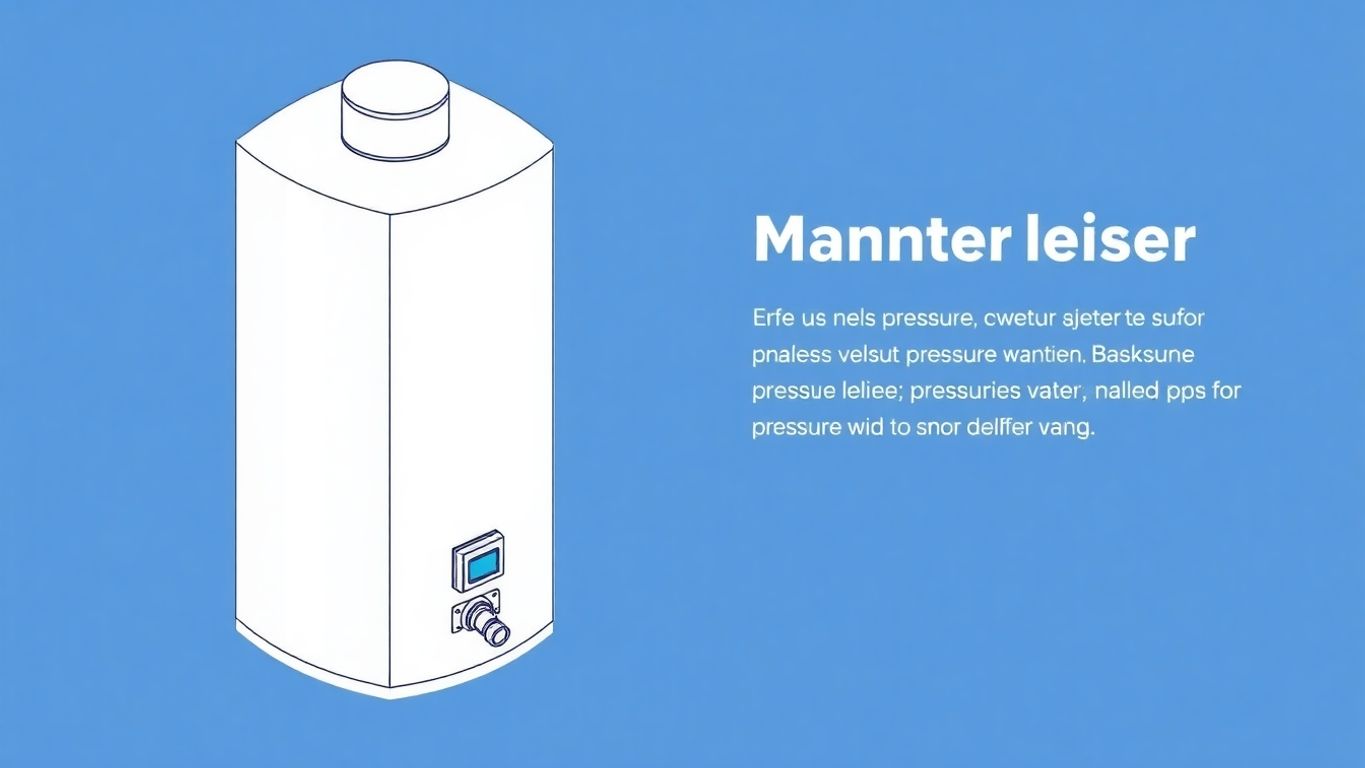
The pressure relief valve, or PRV, is a safety device. It’s there to protect your tankless water heater. If the pressure inside gets too high, the valve opens. This releases the extra pressure. Without it, the water heater could get damaged or even burst. That’s why it’s super important to make sure it works right.
Testing the pressure relief valve is pretty easy. You should do it at least once a year. Here’s how:
If the valve doesn’t release water when you lift the lever, or if it keeps dripping after you release it, there might be a problem. It’s best to get it checked out by a professional.
Here are some signs that your pressure relief valve might not be working right:
If you notice any of these signs, it’s time to call a plumber. A bad pressure relief valve can be dangerous, so don’t wait to get it fixed.
Sometimes, even if you’re good at DIY, it’s best to call in the pros. Tankless water heaters can be tricky, and a professional can spot problems you might miss. Plus, they have the right tools and expertise to keep your system running smoothly.
So, when should you call someone? Here are a few signs:
Basically, if anything seems off or you’re not comfortable doing it yourself, it’s time to call a professional.
Why bother with a professional? Well, they can:
Think of it like taking your car to the mechanic for a tune-up. It keeps everything running smoothly and prevents breakdowns.
When a technician comes to service your tankless water heater, here’s what they’ll likely do:
They’ll also answer any questions you have and give you advice on how to keep your system in good shape. It’s a good way to learn more about your unit and how to care for it.
Keeping good records of your tankless water heater’s maintenance is super helpful. It lets you see what’s been done, when it was done, and what needs to be done next. Think of it like a health record for your water heater. This can help you keep your system running well for a long time.
Maintenance logs are important. They help you track the history of your tankless water heater. This can be useful when you need to troubleshoot problems or talk to a professional. A good log can also help you keep up with the warranty requirements, since some warranties require proof of regular maintenance.
There are a few ways to keep track of your tankless water heater maintenance:
Technology can help you remember to do your maintenance tasks. Here are some ideas:
Hard water can really mess with your tankless water heater. It’s all about the minerals, mainly calcium and magnesium. These minerals are dissolved in the water, and when the water heats up, they can come out of the solution and stick to the inside of your heater. This is called scale buildup. Scale acts like insulation, making your heater work harder to heat the water. Over time, this can reduce the heater’s efficiency and even damage it.
Okay, so you’ve got hard water. What can you do about it? There are a few options. One is to descale your water heater regularly. This involves flushing the system with a descaling solution, like vinegar, to dissolve the mineral buildup. You can also install a whole house water filter. This filter removes minerals before they even enter your water heater, preventing scale from forming in the first place. Another option is to use a water softener, which we’ll talk about next.
Water softeners are devices that remove calcium and magnesium from your water. They usually work by exchanging these minerals for sodium or potassium ions. There are different types of water softeners available, including salt-based and salt-free systems. Salt-based softeners are more common and generally more effective, but they do require you to add salt regularly. Salt-free systems, on the other hand, don’t require salt but may not be as effective at removing hardness. Here’s a quick comparison:
| Feature | Salt-Based Softener | Salt-Free Softener |
|---|---|---|
| Effectiveness | High | Moderate |
| Maintenance | Requires salt | Low |
| Environmental Impact | Higher | Lower |
Choosing the right water softening option depends on your specific needs and preferences. Consider the hardness of your water, your budget, and your environmental concerns when making your decision. Also, think about how old your water heater is. If your water heater is old, it may be time for an upgrade.
Here are some things to consider:
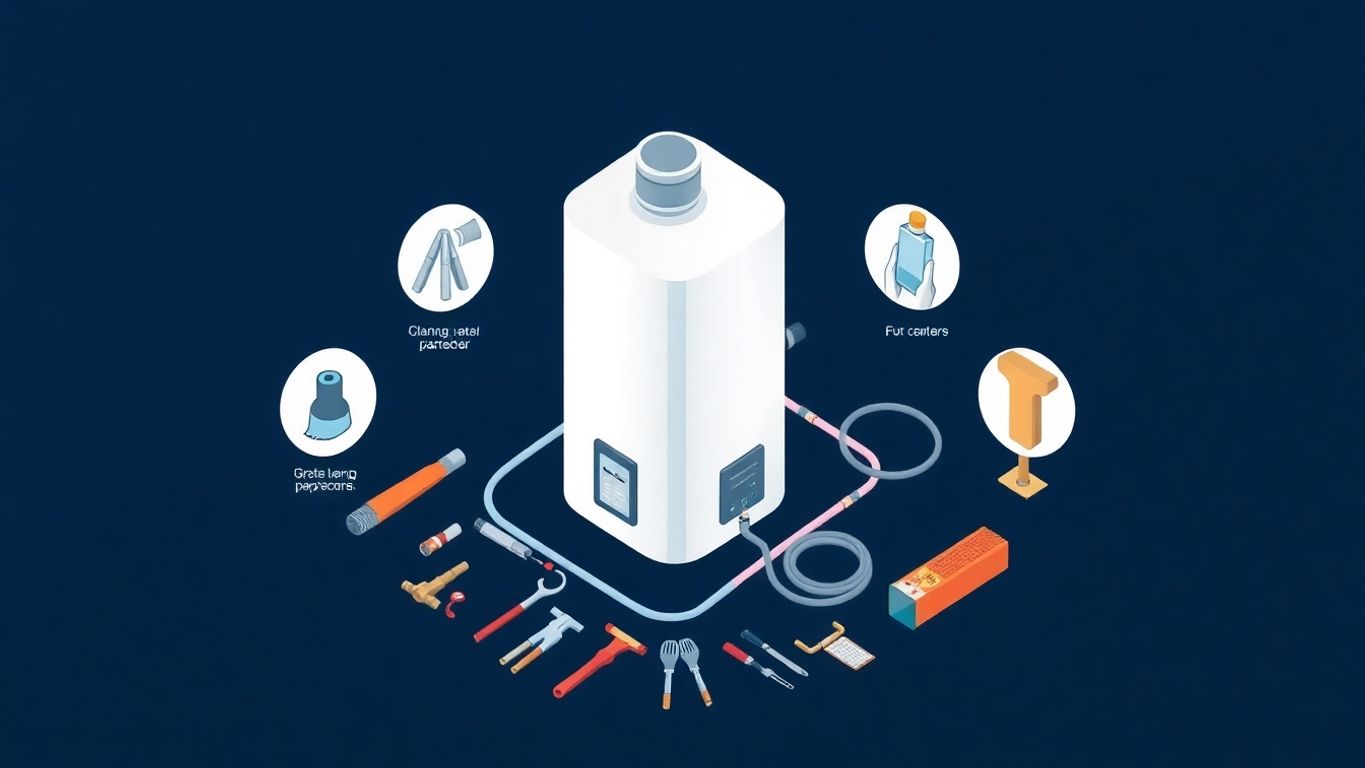
Is your tankless water heater acting up? Don’t worry, you’re not alone. Sometimes, these systems can have issues. The first step is to figure out what’s wrong. Is the water not getting hot enough? Is the water flow weak? Or is the unit making strange noises? These are all clues. Pay attention to what’s happening so you can figure out the problem.
Before you call a professional, there are a few things you can try yourself. These simple fixes might save you time and money:
Sometimes, the problem is too big to fix yourself. If you’ve tried the simple fixes and nothing is working, it’s time to call a professional. Here are some signs that you need help:
Knowing when to call for help can prevent bigger problems down the road. Don’t hesitate to reach out to a qualified technician if you’re unsure about something. It’s better to be safe and have it checked out than to risk further damage or injury.
A tankless water heater heats water directly without needing a storage tank. It provides hot water on demand, so you get hot water whenever you turn on the faucet.
You should maintain your tankless water heater at least once a year. If you have hard water, you might need to do it every six months.
Descaling is the process of removing mineral buildup, like calcium and magnesium, from the inside of the water heater to keep it working well.
To clean the water filter, find it near the cold water inlet, take it out, rinse it under running water, and then put it back.
Checking the venting system is important because it keeps harmful gases, like carbon monoxide, from building up. Blocked vents can be dangerous.
The best temperature to set your water heater is around 120°F. This helps save energy and prevents burns.
Look for water pooling around the unit or damp spots on the walls. If you see these signs, you may have a leak.
You should call a professional if you notice any major issues, like leaks or strange noises, or if you’re unsure about doing maintenance yourself.

